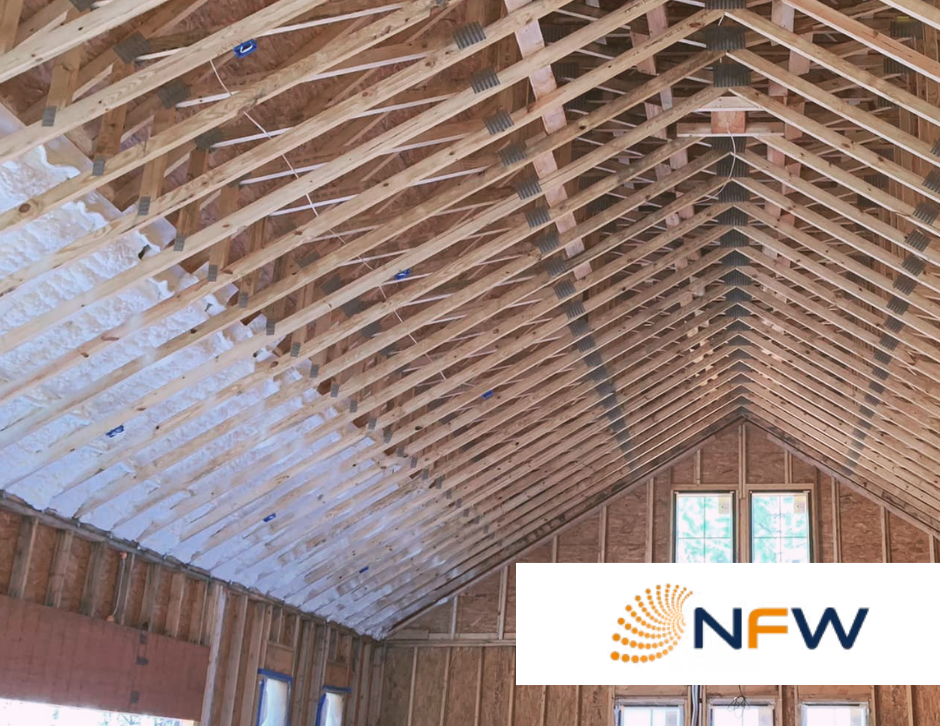Pole Barn Insulation with Spray Foam
- NFW Author
- Aug 19
- 2 min read

Pole barns sprang up across Western Canada for their speed of construction and versatile interiors. However, bare sheet‑metal envelopes magnify prairie extremes, baking tractors in August and freezing riding arenas come January. Pole barn insulation using closed‑cell spray foam stabilizes temperatures, preserves finishes and extends equipment life in one efficient retrofit.
Structural Strength and Building Health - Pole Barn Insulation
Spray foam adheres to every rib and diaphragm, turning flimsy sheet metal into a bonded composite panel. Third‑party tests show closed‑cell foam increases rack strength by up to 300 %, a welcome margin when chinook gusts hammer end walls. Added stiffness also reduces metal fatigue, extending fastener life and keeping roof panels tight.
Spray foam’s dense microcellular matrix also absorbs vibration. That means less drumming when hail strikes and quieter interiors during rain, which is important for livestock that spook at sudden noise.
Spray Foam Installation Steps and What to Expect
Assessment: We measure walls, test moisture and map any obstructions.
Surface Prep: Dust and loose paint are brushed off; oily panels receive a quick solvent wipe.
Masking: Tracks, doors and equipment are draped. We hang temporary poly curtains to section bays, so daily chores continue elsewhere.
Spray Application: Two‑component foam exits the gun at 43 °C, reaching tack‑free state in 60 seconds. Successive lifts build thickness without sag.
Ventilation & Return to Service: Exhausters clear organic vapours; staff re‑enter in two hours.
A typical 3 ,000 ft² pole barn requires about 1, 000 kg of material and four hours of spray time. With two technicians on site the crew wraps in a single daylight shift, trimming overspray and removing masking before departure.
Spray foam insulation comes at a higher price than classic fibreglass, yet offers real‑world R‑values that rival 6″ fibreglass plus air sealing labour. The federal Agricultural Clean Technology Program may cover up to 40 % of energy‑efficiency upgrades for qualifying producers. Provincial Efficiency Alberta grants have helped dozens of our clients close the cost gap further.
Environmental and Health Considerations
Modern spray formulas rely on hydrofluoro‑olefin (HFO) blowing agents with global‑warming potentials below 1. That drops the embodied carbon of a foam job by 99 % compared with legacy HFC systems. Once cured, the foam emits no measurable VOCs, an advantage over some vapour‑open batt adhesives.
Foam also deters rodents. Its hardness resists gnawing and it contains no cellulose, denying nesting material to mice and squirrels. One agronomist client reported a 70 % decline in mouse activity two seasons after a foam retrofit.
Ready to move forward with your pole barn insulation? Request your free project estimate through our contact page. Service areas include Red Deer, Blackfalds and Sylvan Lake.




Spray foam insulation is a long-term solution for homes and businesses, offering up to 80 years of durability. Its airtight seal, moisture resistance, and pest protection keep energy costs low and comfort high. Investing in spray foam insulation ensures lasting efficiency and value for your property.